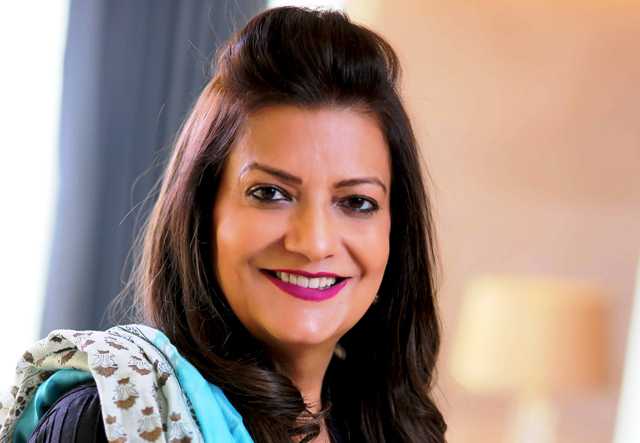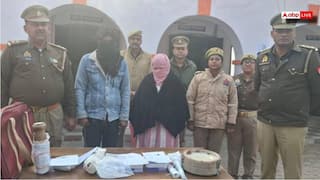Explorer
Why thrust on rural sector will speed up economic development

 Lalita Nijhawan, Educationist-Social activist The next budget of the Modi administration is expected to specially focus on rural India. That is as it should be because creating internal infrastructure in the rural areas is a declared policy of the government. Keeping this in view, it has gone so far as to revise MGNREGA, the flagship employment generation scheme for rural India so it does not remain limited to digging pits. The other reason for focusing on rural areas is to pour salve over the wounds of the rural populace which has been badly hit due to demonetization. The shortage of cash in circulation has resulted in a steep decline in the rates of agricultural produce; on the surface it has resulted in a visible decline in dearness in the urban areas, it has in fact worked to destabilize farmers’ finances. Though the latest agricultural data released by the government claim that demonetization has had no marked effect on the sector as the consumption of seeds and fertilizers has in fact increased, the government is possibly trying to contain the harm. The third and key reason behind the special focus is to bring on track the lagging construction sector which is related not only with the steel and cement industries but also several medium, small and micro-level enterprises. If the construction sector picks up speed, it would serve the dual purposes of nurturing rural employment and income generation and strengthening the ambitious aim of ‘housing for all by 2022’. Demonetization has been followed by reduction in interest rates. Rebates for buying houses to the middle and low income sections will also translate into relief for real estate developers and builders who are groaning under the mountain of unsold inventory. The expected raise in the income-tax slab would mean some resources for the middle class to invest. The step would of course result in political dividends. The opposition has turned demonetization into a major issue and left no stone unturned in creating a public opinion against it. Any relief to the average citizens would mean more strength for the BJP in the coming assembly elections. All said and done, the governments expected thrust on the rural sector will certainly speed up the economic development of the country. The question however remains: does the government have a solid plan for rural development? The majority of our rural population is dependent on agriculture. The figures of farmer’s suicides across the country underline the fact that agriculture is risky business today. With able-bodied young men and women migrating to cities in search for a better future, small farms are left in the care of the elderly. Even the big farmers lament that because of the series of middlemen coming into play, agriculture is no longer a profit making venture. In that scenario, isn’t the government’s investment in the rural sector akin to throwing good pennies in a wishing well? Shouldn’t the government be investing these resources in sectors which would generate more and better employment opportunities for the jobless? Gandhi had envisioned Gram Swaraj as a situation where the village would be a self-contained unit. Industrialization, the structure of the market, the changing expectations of the villagers themselves have combined to turn that into a dream. Migration from villages is a growing phenomenon...the government should now also give the plight of rural migrants in cities some serious thought. That will not only improve the situation in urban centers but also result in better employment opportunities. But when one looks at the rural sector in terms of the size of the population pie involved, it is clear that despite the steady migration, the number of people living in villages is quite large and agriculture is still their mainstay. Division of land over the generations has meant constantly decreasing farm sizes that make agriculture an impractical choice. The small and marginal farmers often work for big farmers or moonshine on infrequent small time jobs. Seen in this context, MGNREGA is the major government initiative aimed at employment generation for the rural populace. According to its official website, MGNREGA was implemented in 682 districts, 6881 blocks and 2, 62,274 panchayats and benefited 25.35 crore persons. It gives the figures for SC and ST beneficiaries and mentions that 56.23% of all work under the scheme went to women but does not provide the number of women who benefited from the scheme. One would deduct that women took greater advantage of the scheme. Was that because men had migrated to cities for higher wages? Coming to social security, the three main programmes in this area are: Pradhanmantri Jandhan Yojana, Suraksha Beema Yojana and Jeevan Jyoti Beema Yojana. According to the official website of the Pradhanmantri Jandhan Yojana, 26.68 crore accounts have been opened under it with a total deposit of Rs. 69,027.17 crore in them. On the basis of these accounts a total of 9.88 crore Suraksha Beema policies and 3.08 crore Jeevan Jyoti Beema policies were issued. Impressive figures! Only one must factor in the fact that a large amount of money was deposited in Jandhan accounts at the peak of demonetization. The government desires to connect Jandhan to AADHAR card to deposit any monetary benefits of government schemes directly into these accounts. The government’s intentions are fine but the majority of Jandhan beneficiaries have yet to be introduced to online transaction. The government has also unfolded Mudra scheme to provide loans for up to Rs.100,000 to small entrepreneurs. The positive aspect of these schemes is, they provide farmers and labourers a feeling of security for a very small investment. The limitation: the insurance and pensions proposed under them are very small and are bound to devalue further in future. Thus the rural development policy of the government is not very clear on how it would create long term livelihoods or how the construction drive in the rural sector would be connected to key infrastructures like education, health and security. The most glaring shortcoming is its ambiguity when it comes to women. Mudra Yojana, Suraksha Beema Yojana, Jeeven Jyoti Beema Yojana or Atal Pension Yojana, none of the schemes have data on the class of its women beneficiaries. If the government is really serious about its rural development schemes, it must collect the data on women in greater detail as they are the ones who hold the castle when men venture abroad in search of sustenance. In the absence of men, the onus for the success of rural development schemes lies with women. The hints so far are that the government will adopt the development of the internal structure and construction as tools of rural development. Is it then going to leave women’s development at the mercy of irregular employment for daily wages and small time social security schemes? Undoubtedly the government intends well by its female citizens but much requires to be done for rural women and girls. According to UNICEF data India leads the world when it comes to MMR and under five child deaths. The culprits here clearly are the lack of resources at ground level and deep set attitudes. Some affirmative steps in this direction in the forthcoming budget could mean the world for women’s health and wellbeing in India. Some time ago, some enthusiastic economists had proposed a Universal Basic Income Scheme which would have provided goods and money to all rural citizens and they would not have to do anything in return. It was shot down by government officials. Citizens of Switzerland had turned down a similar proposal saying they would not take anything for doing nothing. Scotland and Finland are mulling it. The strength of the Indian peasant has always been his perseverance and strong sense of self. The Modi government’s plans for rural development need to factor in the ground realities and future projections. The government has gained access to the rural population through Jandhan and digitization. It now needs to cement its commitment to the people of India by helping the rural population, including women, become self-sustained, self-reliant and self-confident through purposeful and gainful employment. (Lalita Nijhawan is an Industralist, Social Activist and Educationist. She has won 350 plus awards including Woman Achiever award by President of India, 2016.) Disclaimer: The opinions, beliefs and views expressed by the various authors and forum participants on this website are personal and do not reflect the opinions, beliefs and views of ABP News Network Pvt Ltd.
Lalita Nijhawan, Educationist-Social activist The next budget of the Modi administration is expected to specially focus on rural India. That is as it should be because creating internal infrastructure in the rural areas is a declared policy of the government. Keeping this in view, it has gone so far as to revise MGNREGA, the flagship employment generation scheme for rural India so it does not remain limited to digging pits. The other reason for focusing on rural areas is to pour salve over the wounds of the rural populace which has been badly hit due to demonetization. The shortage of cash in circulation has resulted in a steep decline in the rates of agricultural produce; on the surface it has resulted in a visible decline in dearness in the urban areas, it has in fact worked to destabilize farmers’ finances. Though the latest agricultural data released by the government claim that demonetization has had no marked effect on the sector as the consumption of seeds and fertilizers has in fact increased, the government is possibly trying to contain the harm. The third and key reason behind the special focus is to bring on track the lagging construction sector which is related not only with the steel and cement industries but also several medium, small and micro-level enterprises. If the construction sector picks up speed, it would serve the dual purposes of nurturing rural employment and income generation and strengthening the ambitious aim of ‘housing for all by 2022’. Demonetization has been followed by reduction in interest rates. Rebates for buying houses to the middle and low income sections will also translate into relief for real estate developers and builders who are groaning under the mountain of unsold inventory. The expected raise in the income-tax slab would mean some resources for the middle class to invest. The step would of course result in political dividends. The opposition has turned demonetization into a major issue and left no stone unturned in creating a public opinion against it. Any relief to the average citizens would mean more strength for the BJP in the coming assembly elections. All said and done, the governments expected thrust on the rural sector will certainly speed up the economic development of the country. The question however remains: does the government have a solid plan for rural development? The majority of our rural population is dependent on agriculture. The figures of farmer’s suicides across the country underline the fact that agriculture is risky business today. With able-bodied young men and women migrating to cities in search for a better future, small farms are left in the care of the elderly. Even the big farmers lament that because of the series of middlemen coming into play, agriculture is no longer a profit making venture. In that scenario, isn’t the government’s investment in the rural sector akin to throwing good pennies in a wishing well? Shouldn’t the government be investing these resources in sectors which would generate more and better employment opportunities for the jobless? Gandhi had envisioned Gram Swaraj as a situation where the village would be a self-contained unit. Industrialization, the structure of the market, the changing expectations of the villagers themselves have combined to turn that into a dream. Migration from villages is a growing phenomenon...the government should now also give the plight of rural migrants in cities some serious thought. That will not only improve the situation in urban centers but also result in better employment opportunities. But when one looks at the rural sector in terms of the size of the population pie involved, it is clear that despite the steady migration, the number of people living in villages is quite large and agriculture is still their mainstay. Division of land over the generations has meant constantly decreasing farm sizes that make agriculture an impractical choice. The small and marginal farmers often work for big farmers or moonshine on infrequent small time jobs. Seen in this context, MGNREGA is the major government initiative aimed at employment generation for the rural populace. According to its official website, MGNREGA was implemented in 682 districts, 6881 blocks and 2, 62,274 panchayats and benefited 25.35 crore persons. It gives the figures for SC and ST beneficiaries and mentions that 56.23% of all work under the scheme went to women but does not provide the number of women who benefited from the scheme. One would deduct that women took greater advantage of the scheme. Was that because men had migrated to cities for higher wages? Coming to social security, the three main programmes in this area are: Pradhanmantri Jandhan Yojana, Suraksha Beema Yojana and Jeevan Jyoti Beema Yojana. According to the official website of the Pradhanmantri Jandhan Yojana, 26.68 crore accounts have been opened under it with a total deposit of Rs. 69,027.17 crore in them. On the basis of these accounts a total of 9.88 crore Suraksha Beema policies and 3.08 crore Jeevan Jyoti Beema policies were issued. Impressive figures! Only one must factor in the fact that a large amount of money was deposited in Jandhan accounts at the peak of demonetization. The government desires to connect Jandhan to AADHAR card to deposit any monetary benefits of government schemes directly into these accounts. The government’s intentions are fine but the majority of Jandhan beneficiaries have yet to be introduced to online transaction. The government has also unfolded Mudra scheme to provide loans for up to Rs.100,000 to small entrepreneurs. The positive aspect of these schemes is, they provide farmers and labourers a feeling of security for a very small investment. The limitation: the insurance and pensions proposed under them are very small and are bound to devalue further in future. Thus the rural development policy of the government is not very clear on how it would create long term livelihoods or how the construction drive in the rural sector would be connected to key infrastructures like education, health and security. The most glaring shortcoming is its ambiguity when it comes to women. Mudra Yojana, Suraksha Beema Yojana, Jeeven Jyoti Beema Yojana or Atal Pension Yojana, none of the schemes have data on the class of its women beneficiaries. If the government is really serious about its rural development schemes, it must collect the data on women in greater detail as they are the ones who hold the castle when men venture abroad in search of sustenance. In the absence of men, the onus for the success of rural development schemes lies with women. The hints so far are that the government will adopt the development of the internal structure and construction as tools of rural development. Is it then going to leave women’s development at the mercy of irregular employment for daily wages and small time social security schemes? Undoubtedly the government intends well by its female citizens but much requires to be done for rural women and girls. According to UNICEF data India leads the world when it comes to MMR and under five child deaths. The culprits here clearly are the lack of resources at ground level and deep set attitudes. Some affirmative steps in this direction in the forthcoming budget could mean the world for women’s health and wellbeing in India. Some time ago, some enthusiastic economists had proposed a Universal Basic Income Scheme which would have provided goods and money to all rural citizens and they would not have to do anything in return. It was shot down by government officials. Citizens of Switzerland had turned down a similar proposal saying they would not take anything for doing nothing. Scotland and Finland are mulling it. The strength of the Indian peasant has always been his perseverance and strong sense of self. The Modi government’s plans for rural development need to factor in the ground realities and future projections. The government has gained access to the rural population through Jandhan and digitization. It now needs to cement its commitment to the people of India by helping the rural population, including women, become self-sustained, self-reliant and self-confident through purposeful and gainful employment. (Lalita Nijhawan is an Industralist, Social Activist and Educationist. She has won 350 plus awards including Woman Achiever award by President of India, 2016.) Disclaimer: The opinions, beliefs and views expressed by the various authors and forum participants on this website are personal and do not reflect the opinions, beliefs and views of ABP News Network Pvt Ltd. Follow Breaking News on ABP Live for more latest stories and trending topics. Watch breaking news and top headlines online on ABP News LIVE TV
Read more






































